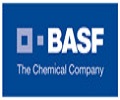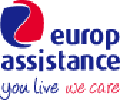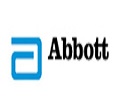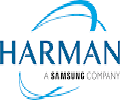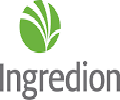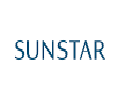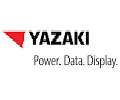-
Email Us
- Top Reports
Global Fetal Alcohol Spectrum Disorder (FASD) Market Economic and Social Impact 2025-2032
Price
Single User License 3300
Multi User License 6000
Corporate License 7200
Fetal Alcohol Spectrum Disorder (FASD) represents a critical public health concern, addressing the effects of prenatal alcohol exposure that can lead to a range of physical, behavioral, and cognitive abnormalities in affected individuals. The FASD market encompasses healthcare services, educational resources, research initiatives, and community support aimed at prevention, diagnosis, and treatment of this condition. As awareness surrounding FASD continues to grow, so does its significance in public health discussions, driving both government and non-profit organizations to invest in solutions that prevent alcohol consumption during pregnancy and improve outcomes for those already affected.
The FASD market is witnessing significant evolution, with size estimates reflecting a growing recognition of the disorder. Currently valued at several billion dollars, driven by rising cases and increased diagnostic capabilities, the market is set for substantial growth in the coming years. Insights from a recently published report by STATS N DATA indicate that the FASD sector could expand at a compound annual growth rate (CAGR) of over 6%, spurred by heightened awareness campaigns, legislative measures to promote healthy pregnancies, and advancements in medical therapy. These trends illustrate not only the pressing need for comprehensive solutions but also present opportunities for innovative interventions in diagnosis and therapy.
Key market drivers include a surge in educational initiatives and policy enforcement aimed at preventing alcohol use during pregnancy, which serve as pivotal components of FASD-related strategies. Conversely, the market faces challenges such as stigma associated with both alcohol use and FASD, which can impede timely intervention and support for affected families. Nonetheless, there are vast opportunities for technological advancements, particularly in telehealth and personalized medicine, to enhance diagnosis and ongoing support for individuals with FASD. Innovations in genetic research and neuroimaging are also paving the way for new therapeutic strategies, poised to transform how we understand and manage this complex disorder in the future. The FASD market holds significant promise for improving lives, fostering healthy developmental outcomes, and creating supportive environments for those affected and their families.
The global business environment is constantly evolving, and keeping up with the latest trends in the FETAL ALCOHOL SPECTRUM DISORDER (FASD) MARKETis essential for businesses aiming to succeed. Our detailed market research report by STATS N DATA serves as a crucial resource for investors and companies, offering comprehensive insights into the Global Fetal Alcohol Spectrum Disorder (Fasd) Industry. This report goes beyond mere data analysis, providing advanced revenue projections, in-depth forecasts, and a thorough examination of future trends from 2024 to 2031. For decision-makers navigating this dynamic market, our report is an indispensable guide, helping craft strategies aligned with the market's anticipated growth and changes.

Market Overview and Historical Perspective
The report begins with a detailed overview of the Fetal Alcohol Spectrum Disorder (Fasd) Market, focusing on its current size, scope, and structure. By leveraging extensive historical data, the report uncovers key insights that trace the market's evolution over time. Understanding past trends and market patterns gives stakeholders a solid foundation for predicting future developments in the Fetal Alcohol Spectrum Disorder (Fasd) Market. This historical perspective is essential for identifying growth opportunities and innovative paths forward, allowing businesses to position themselves advantageously.
Future Insights and Market Projections
In addition to historical analysis, the report offers forward-looking insights into the future of the Fetal Alcohol Spectrum Disorder (Fasd) Market. Expert forecasts and detailed analyses of emerging trends provide stakeholders with a clear view of the market's expected direction. By identifying key growth drivers, such as technological innovations and increasing demand across various sectors, the report outlines the factors propelling the market forward. It also considers potential challenges like regulatory changes and economic uncertainties, equipping stakeholders with the knowledge needed to adapt and thrive.
Market Segmentation
The Fetal Alcohol Spectrum Disorder (Fasd) Market is segmented into various categories, including product type, application/end-user, and geography. Detailed segmentation is outlined as follows:
Type
- Type 1
- Type 2
Application
- Application 1
- Application 2
- Application 3
Each segment is thoroughly examined to understand its role and impact on overall market dynamics. This section evaluates the size and growth rate of each segment, helping stakeholders pinpoint areas with significant expansion potential. This segmentation analysis is crucial for identifying the market's key drivers and understanding which areas offer the most promise for future development.
Additionally, the report includes a market attractiveness analysis, assessing the appeal of each segment based on factors such as market potential, competitive intensity, and growth prospects. This analysis provides a comprehensive view of which segments present the best opportunities for investment and strategic initiatives, enabling stakeholders to allocate resources effectively.
Geographic Analysis
The report also delves into the geographical segmentation of the Fetal Alcohol Spectrum Disorder (Fasd) Market, offering an in-depth analysis of major regions including North America, Europe, Asia-Pacific, Latin America, and the Middle East & Africa. Each region is assessed based on market size, growth rate, and key trends, providing stakeholders with valuable insights into regional dynamics and expansion opportunities. This geographical analysis is critical for understanding the global landscape of the Fetal Alcohol Spectrum Disorder (Fasd) Market and tailoring strategies to fit specific regional markets.
Competitive Landscape
Companies profiled in this report are
- Novo Nordisk A/S
- Sanofi
- Pfizer
- Momenta Pharmaceuticals
- LEO Pharma A/S
- Igenomix
- Laboratoire Francais de Fractionnement et de Biotechnologies (LFB)
- Natera
- Perrigo Company plc
- Bayer AG
- and Eli Lilly and Company
The competitive landscape of the Fetal Alcohol Spectrum Disorder (Fasd) Market is characterized by vigorous competition among leading players, all vying to maintain and expand their market share. Our report offers a comprehensive overview of this competitive environment, profiling major companies and analyzing their market positions. This section includes detailed SWOT analyses for each key competitor, highlighting their strengths, weaknesses, opportunities, and threats. Understanding these dynamics is vital for stakeholders looking to refine their strategies and secure a competitive edge.
The report also explores strategic moves by key players, including mergers, acquisitions, partnerships, and new product developments. Staying updated on these activities helps stakeholders anticipate changes in the competitive landscape and adjust their strategies accordingly.
Furthermore, the report features a benchmarking analysis of key products and services within the Fetal Alcohol Spectrum Disorder (Fasd) Market. This comparison sheds light on the performance and market positioning of various offerings, helping stakeholders identify best practices and areas for improvement. This analysis is crucial for stakeholders aiming to enhance their competitive positioning and sustain a strong market presence.
Recent Developments
Significant developments have recently shaped the Global Fetal Alcohol Spectrum Disorder (Fasd) Market, including mergers, acquisitions, partnerships, and innovative product launches. Our report provides an in-depth analysis of these recent changes, offering stakeholders insights into how these activities have influenced the market's competitive dynamics.
Beyond mergers and acquisitions, the report highlights strategic alliances and partnerships formed between key players in the Fetal Alcohol Spectrum Disorder (Fasd) Market. These collaborations are essential for driving innovation and expanding market reach, and understanding these dynamics can help stakeholders identify potential opportunities for partnership and growth.
Moreover, the report includes a detailed analysis of recent product launches and technological innovations within the Fetal Alcohol Spectrum Disorder (Fasd) Market. This section spotlights the latest advancements and emerging trends, providing stakeholders with crucial information on new opportunities. Staying informed about these developments is key for stakeholders looking to maintain a competitive edge.
Technological Advancements and Future Disruptions
Technological advancements are a major driver of change in the Global Fetal Alcohol Spectrum Disorder (Fasd) Market. Our report highlights the most impactful technological trends, showing how these innovations are reshaping the industry. This section offers a comprehensive overview of the latest technological developments, including breakthroughs in product design, manufacturing techniques, and digital technologies.
The report also examines the impact of these technological advancements on the Fetal Alcohol Spectrum Disorder (Fasd) Market, exploring how they are altering industry dynamics and creating new opportunities for growth. This analysis is essential for stakeholders looking to leverage technology to enhance their competitive positioning and meet evolving market demands.
Additionally, the report provides insights into future technological innovations that have the potential to disrupt the market. These emerging technologies are poised to create new growth opportunities and challenges, and staying informed about these developments is crucial for stakeholders aiming to stay ahead of the competition.
Industry Dynamics and Market Structure
The report offers a detailed examination of the overall structure and dynamics of the Fetal Alcohol Spectrum Disorder (Fasd) Market, helping stakeholders understand the industry's key components and their interactions. Understanding these elements is vital for identifying collaboration and innovation opportunities that drive market growth.
The report also explores the key factors influencing industry dynamics, including economic, regulatory, and technological aspects. By understanding these dynamics, stakeholders can develop strategies that align with the industry's overall structure and capitalize on emerging opportunities.
Moreover, the report provides insights into the evolving nature of the Fetal Alcohol Spectrum Disorder (Fasd) Market?s value chain. This analysis follows the process from suppliers to end-users, highlighting where value is added at each stage. By optimizing the value chain, stakeholders can improve operational efficiency and secure a competitive advantage.
Porter's Five Forces Analysis
Our Fetal Alcohol Spectrum Disorder (Fasd) Market report employs Porter's Five Forces Analysis to offer a strategic framework for understanding the competitive landscape. This analysis evaluates the bargaining power of buyers and suppliers, the threat of new entrants and substitute products, and the intensity of competitive rivalry. These insights are crucial for stakeholders looking to understand the factors that influence the industry's profitability and competitiveness.
The report also explores how these forces might evolve over time, providing stakeholders with insights into future competitive dynamics. By understanding these forces, stakeholders can develop strategies that enhance their market position and mitigate potential risks.
Value Chain Analysis
The Fetal Alcohol Spectrum Disorder (Fasd) Market report includes a comprehensive value chain analysis, offering stakeholders a detailed understanding of the process from suppliers to end-users. This analysis highlights each phase of the value chain, showing where value is added and identifying potential areas for efficiency improvements or strategic adjustments. By optimizing the value chain, stakeholders can enhance their operational efficiency and secure a competitive edge.
In addition to mapping the value chain, the report explores the key drivers of value creation within the Fetal Alcohol Spectrum Disorder (Fasd) Market. Understanding these drivers is critical for stakeholders seeking to maximize their return on investment and drive business growth.
Customer Preferences and Market Trends
Understanding customer preferences and market trends is vital for success in the Fetal Alcohol Spectrum Disorder (Fasd) Market. The report identifies key consumer expectations and trends, providing clarity on what consumers value most in products and services. This section explores how these preferences are evolving, offering stakeholders insights into how they can tailor their offerings to meet changing consumer demands.
The report also examines the impact of these trends on the market, analyzing how shifts in consumer preferences are driving changes in the industry. By aligning their strategies with customer needs, stakeholders can improve customer satisfaction, build brand loyalty, and drive business growth.
Regulatory Landscape
The regulatory environment plays a critical role in shaping the Fetal Alcohol Spectrum Disorder (Fasd) Market. Our report provides a comprehensive overview of the key regulations and standards that impact the industry. This section examines the legal and regulatory framework governing the market, giving stakeholders a clear understanding of the rules and guidelines they must follow.
The report also explores the implications of recent regulatory changes, evaluating how these modifications are shaping the market and affecting stakeholders. Understanding the regulatory landscape is essential for stakeholders looking to stay compliant and avoid potential legal complications.
Additionally, the report provides insights into potential future regulatory developments. Staying informed about these changes is crucial for stakeholders seeking to anticipate challenges and adjust their strategies accordingly.
Market Entry Strategies
Entering the Fetal Alcohol Spectrum Disorder (Fasd) Market presents several challenges, including high barriers to entry and intense competition. This report identifies the main obstacles new entrants must overcome to successfully penetrate the market, such as significant capital requirements, stringent regulatory standards, and the presence of established competitors.
The report also outlines critical success factors for new entrants in the Fetal Alcohol Spectrum Disorder (Fasd) Market, covering essential aspects like innovation, effective marketing strategies, strategic partnerships, and a strong value proposition. By focusing on these key elements, new entrants can effectively manage market complexities and improve their chances of success.
Additionally, the report offers strategic recommendations for market entry, providing practical advice on market positioning, customer acquisition strategies, and differentiation tactics. These strategies are tailored to help new entrants establish a strong market presence and gain a competitive edge in the Fetal Alcohol Spectrum Disorder (Fasd) Market.
Economic Indicators and Risk Analysis
The report explores the impact of macroeconomic factors on the Fetal Alcohol Spectrum Disorder (Fasd) Market, including GDP growth, inflation rates, and employment trends. This analysis offers stakeholders a comprehensive understanding of the broader economic environment and its influence on the market, supporting informed decision-making.
The report also examines the risks and uncertainties within the Fetal Alcohol Spectrum Disorder (Fasd) Market, highlighting potential challenges to market stability and growth. These risks include economic volatility, regulatory shifts, and intense market competition. By understanding these risks, stakeholders can develop strategies to mitigate them and strengthen market resilience.
Additionally, the report provides specific strategies for mitigating identified risks. The section on impact assessment and mitigation offers actionable recommendations that help Fetal Alcohol Spectrum Disorder (Fasd) Market participants manage risks effectively and maintain stability. By proactively addressing these risks, stakeholders can protect their interests and support sustainable growth.
Investment Analysis and Opportunities
This research evaluates key suppliers and distributors in the Fetal Alcohol Spectrum Disorder (Fasd) Market, highlighting the primary entities involved in providing and distributing products. The report offers insights into their capabilities, reliability, and strategic significance within the supply chain. Understanding these dynamics allows stakeholders to optimize their operations and strengthen their market positions.
The report also identifies prime investment opportunities and offers strategic recommendations. It highlights areas with substantial potential for high returns, helping investors make informed decisions about resource allocation for maximum impact. Strategic investments in these high-potential areas can significantly increase profitability and stimulate market growth.
The report includes a comprehensive analysis of return on investment (ROI) and financial projections. This analysis is crucial for assessing the expected profitability of investments and developing informed financial strategies. Understanding these financial forecasts is essential for evaluating potential returns and associated risks of various investment avenues. By leveraging data-driven investment decisions, stakeholders can maximize their returns and achieve their financial objectives.
Moreover, the report includes feasibility studies for potential new projects or ventures. These studies evaluate the viability of new endeavors by analyzing market demand, cost estimates, and potential revenue. Such evaluations ensure that investors can make well-informed decisions about pursuing new opportunities. Engaging in feasible projects allows stakeholders to expand their market presence and drive business growth.
Technological and Innovation Insights
The Fetal Alcohol Spectrum Disorder (Fasd) Market report explores emerging technologies and their potential impact on the market, highlighting how these advancements are setting the stage for the industry's future. This section focuses on innovations that could disrupt the market landscape, creating new opportunities for growth and innovation.
Additionally, the report provides a detailed analysis of the innovation landscape and research and development (R&D) activities within the Fetal Alcohol Spectrum Disorder (Fasd) Market. It examines ongoing R&D efforts and the overall state of innovation, offering a comprehensive view of how companies are driving progress and maintaining competitiveness. This analysis is critical for understanding the role of innovation in market growth and identifying areas for strategic investment.
Furthermore, the report explores the potential of disruptive technologies within the Fetal Alcohol Spectrum Disorder (Fasd) Market. These technologies have the capacity to reshape the industry, creating new opportunities and challenges. By staying informed about these emerging technologies, stakeholders can proactively adjust their strategies and leverage innovation to secure a competitive advantage.
Geographical Insights
The report delivers a thorough geographical analysis of the Fetal Alcohol Spectrum Disorder (Fasd) Market, offering insights into regional trends and opportunities. This section covers key regions, including North America, Europe, Asia-Pacific, Latin America, and the Middle East & Africa. Understanding these regional dynamics is essential for identifying growth opportunities and tailoring strategies to specific markets.
Regional Highlights
The analysis also highlights regional trends and developments, emphasizing the most significant market drivers and challenges in each area. By understanding these regional dynamics, stakeholders can make informed decisions about market entry, expansion, and resource allocation.
Market Size and Regional Growth
The report examines the market size and growth rate across different regions, providing a clear view of which areas are experiencing the most rapid growth. This information is crucial for identifying key markets and planning strategic initiatives.
Emerging Markets and Strategic Opportunities
The report identifies emerging markets with high growth potential, offering strategic recommendations for capitalizing on these opportunities. Understanding these emerging markets is vital for stakeholders looking to expand their presence and tap into new growth areas.
FAQ
What is the Global Fetal Alcohol Spectrum Disorder (Fasd) Market size, and what growth rate can be expected during the forecast period?
What are the key factors driving the growth of the Fetal Alcohol Spectrum Disorder (Fasd) Market?
What challenges and risks does the Fetal Alcohol Spectrum Disorder (Fasd) Market currently face?
Who are the major players in the Fetal Alcohol Spectrum Disorder (Fasd) Market?
What are the current trends influencing the shares of the Fetal Alcohol Spectrum Disorder (Fasd) Market?
What insights can be gleaned from applying Porter's Five Forces model to the Fetal Alcohol Spectrum Disorder (Fasd) Market?
What global expansion opportunities are available in the Fetal Alcohol Spectrum Disorder (Fasd) Market?
Our comprehensive market research report on the Global Fetal Alcohol Spectrum Disorder (Fasd) Market is an invaluable resource for investors, executives, and companies looking to deepen their understanding of the industry. With detailed analyses, actionable insights, and strategic recommendations, this report equips stakeholders with the knowledge they need to make informed decisions and capitalize on the opportunities within the Fetal Alcohol Spectrum Disorder (Fasd) Market. We encourage you to leverage these insights to enhance your strategic planning and secure a competitive edge in this dynamic market.
Frequently Asked Questions
1 What global expansion opportunities are available in the Fetal Alcohol Spectrum Disorder (FASD) Market?
The Fetal Alcohol Spectrum Disorder (FASD) report identifies several regions, including North America, Europe, Asia-Pacific, and emerging markets, that present significant growth opportunities. It provides strategic recommendations for companies looking to expand their market presence globally.
2 Who are the major players in the Fetal Alcohol Spectrum Disorder (FASD) Market?
The report profiles the leading players in the Fetal Alcohol Spectrum Disorder (FASD) Market like Novo Nordisk A/S, Sanofi, Pfizer, Momenta Pharmaceuticals, LEO Pharma A/S, Igenomix, Laboratoire Francais de Fractionnement et de Biotechnologies (LFB), Natera, Perrigo Company plc, Bayer AG, and Eli Lilly and Company providing a comprehensive SWOT analysis for each. It examines their market shares, strengths, weaknesses, and strategies, helping stakeholders understand the competitive landscape.
3 What years does this Fetal Alcohol Spectrum Disorder (FASD) Market Report cover?
The report covers the Fetal Alcohol Spectrum Disorder (FASD) Market historical market size for years: 2019, 2020, 2021, 2022 and 2023. The report also forecasts the Fetal Alcohol Spectrum Disorder (FASD) Industry size for years: 2024, 2025, 2026, 2027, 2028, 2029, 2030, and 2031
4 What challenges and risks do the Fetal Alcohol Spectrum Disorder (FASD) Market currently face?
The Fetal Alcohol Spectrum Disorder (FASD) Market faces several challenges, such as economic uncertainties, regulatory shifts, and intense competition. The report provides a risk analysis that identifies potential obstacles and offers strategies for managing them.
5 What insights can be drawn from applying Porter’s Five Forces model to the Fetal Alcohol Spectrum Disorder (FASD) Market?
The Porter’s Five Forces analysis provides valuable insights into the competitive dynamics of the Fetal Alcohol Spectrum Disorder (FASD) Market. It evaluates the bargaining power of buyers and suppliers, the threat of new entrants, the impact of substitutes, and the intensity of competitive rivalry.
6 What are the current trends influencing the Fetal Alcohol Spectrum Disorder (FASD) Market?
Current trends include technological innovations, strategic mergers and partnerships, and shifting consumer preferences. The report discusses how these trends are shaping the market and driving growth opportunities.
7 What competitive strategies are key players in the Fetal Alcohol Spectrum Disorder (FASD) Market using?
The report analyzes the competitive strategies of major players in the Fetal Alcohol Spectrum Disorder (FASD) Market, including mergers, acquisitions, and partnerships. It also looks at product innovations, helping stakeholders anticipate shifts in the market and stay competitive.

